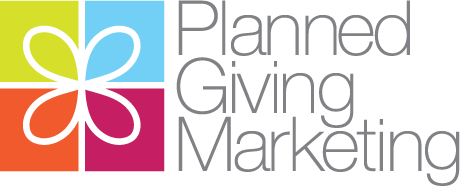
Planned Giving Stories Make People Feel
A Guest Post by Michelle Martin, Messaging Strategist
Elena’s Story
Please join us in welcoming our guest author, Michelle Martin, Messaging Strategist and a Trained StoryBrand Guide. We hope you enjoy this guest post in celebration of National Write Your Story Day – March 14, 2019.
A wealthy family from New Jersey posted an ad announcing their hope to hire an au pair. Within only a few days, they received a response from a woman in Romania. Elena was young, hopeful, and eager to help. She had always dreamed of living in America. With the blessing of her mother and father, Elena boarded a plane, eager to meet the young couple and two kids who would be her family for the next year.
But Elena never met the family. There was no family. Elena became one of the millions of victims of the sex trafficking industry. Within a day of her arrival, she was stripped of her passport, beaten for her resistance, and disappeared into the sex trade.
The first time I heard a story like Elena’s, I was in my mid 20s. When I learned about the multi-billion dollar sex trade industry and how it destroyed lives, I was incensed.
I read every book and article I could on the subject. I learned some massage parlors and nail salons were often a front for trafficking. “Huh.” I thought. “We have a ‘spa’ like that less than a mile away.” So, I staked it out, and sure enough the only people going in and out were men. Armed with impulse and indignation, I walked into the sheriff’s office and demanded they shut it down.
After months of harassing the sheriffs, I received a call: “Michelle. We can’t tell you the details, but the massage parlor is shut down, and the owners have been arrested.” Ohmygod. I had made a difference! And that, my friends, is the story of why I donate to International Justice Mission (IJM). I don’t know the stats for IJM’s budget numbers. But I will remember—and repeat—the stories of people they help. People like Elena. Because those stories make me feel.
(SIDE NOTE TO FUNDRAISERS: this is important. The “emotional” profile I just described makes ME the ideal planned giving donor! But I’ve never been approached to consider IJM for my estate plans. Who among your donors fits this profile?)
NATIONAL STORY TELLING DAY

Today, you’re going to hear a lot of talk about the importance of using good planned giving stories. But from this article, I want you to walk away with less academic know how and more self-realization. Have you heard the saying: people don’t remember what you say, they remember how you made them feel? THAT is the power of a planned giving story. What about your story makes you feel? Why do you do what you do? That part of your story is also what will inspire donors.
I don’t donate because I think they need my money. I donate because it makes me feel like the person I want to be.
I AM A HERO
By now, you’ve likely heard about Donald Miller’s book, “Building a StoryBrand.” The premise is that businesses and nonprofits would do well to talk about their brand in story form. He makes an important point: everyone wakes up in the morning as the hero in their own story. IJM lets me be the hero. With a donation to IJM, I receive a thank you for being a “Freedom Fighter.” That’s powerful stuff.

YOU ARE A HERO
You’re a hero, too, you know. The work you do helps people and inspires other people to give. Can you pinpoint the moment when you realized you were a hero? My hope is that you have one “take away” from this article: your story, your muse, matters. Because it not only drives you, it inspires others. Your story has the power to make people feel. And when they feel empowered by authentic, real-life stories, they engage.
Need Help with Your Donor Stories?
Using storytelling in your planned giving marketing isn’t as easy as it sounds. If you want help creating donor stories that connect to the emotions of your supporters, give Planned Giving Marketing a call at 484-680-7600. They’ll tell your stories in a way that inspires more donors to call.
Michelle Martin is a Messaging Strategist and a Certified StoryBrand Guide who works with companies like Planned Giving Marketing to help nonprofits inspire donors through authentic and inspiring stories. You can reach her at michelle@thebigideamarketing.com.
